Here’s a fun pumpkin STEM activity! Experiment with your own pumpkin pendulums.
This science experiment is so easy to do with supplies you have around your home or classroom, and kids will think it’s lots of fun. An added benefit is that you won’t be harming the pumpkins at all, so you can use them for decorating or something else after you finish.
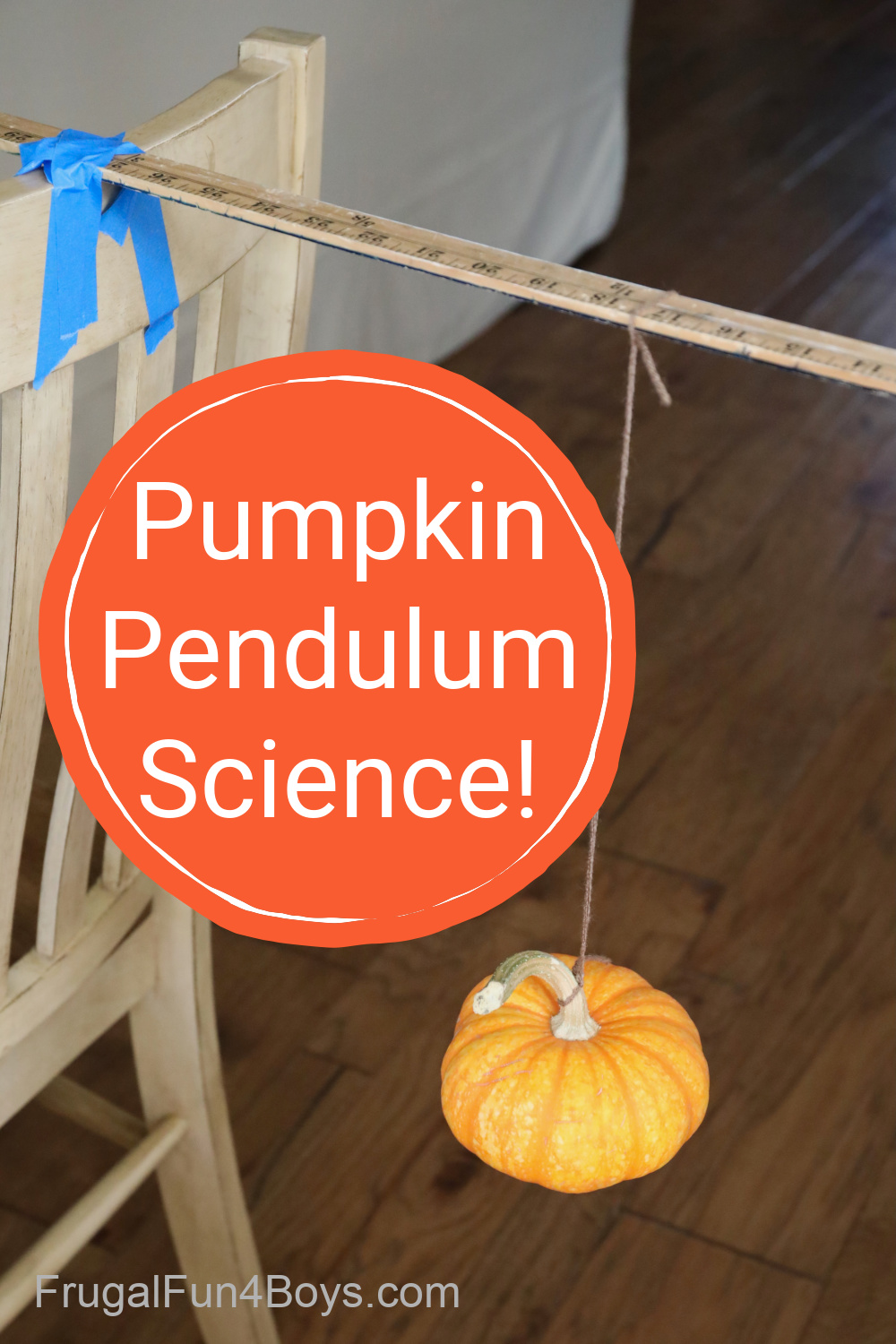
In this experiment, kids will be exploring with pendulums to find out if the length of the string or the mass of the pumpkin will affect the pumpkin pendulum’s period, or the time it takes to make one complete back-and-forth swing.
(Another way to experiment with this same concept is our LEGO Pendulum Science Experiment! This one has a printable recording sheet too.)
Supplies Needed for Pumpkin Pendulums:
- Two chairs
- A yard stick or meter stick
- Pumpkins in at least two different sizes/masses
- Yarn or string
- Masking tape
- A digital scale (optional)
Problem: Will the mass of a pumpkin affect how many back-and-forth swings it makes it 30 seconds? Will the length of the string affect how many back-and-forth swings the pumpkin makes in 30 seconds?
Have students make a hypothesis about what will happen!
Step 1: Compare the mass of at least two pumpkins.
We have a digital gram scale that I purchased at the grocery store, so we were able to weigh our pumpkins. Our larger pumpkin was 431 grams and our smaller one was 290.
If you can’t weigh your pumpkins that’s okay! Kids can compare the mass of their pumpkins by feel. When you’re selecting the pumpkins at the store, it won’t be difficult to choose some that are noticeably different weights.
I found some pumpkins at our local grocery store that had really twisty stems still attached! These were perfect for turning into pendulums.
If you can’t find pumpkins/gourds with a twisty stem, the yarn may slide off. However, you can attach the yarn securely by adding a bit of hot glue after tying the yarn around the stem. Another option is to use tape to secure the yarn.

Step 2: Set up your pumpkin pendulum.
We laid a yard stick across two chairs. If you’re in a classroom setting, you could put the yard stick (or meter stick) across two desks or tables.
The momentum of the swinging pendulum will make the yard stick slide around. Secure it with some masking tape to eliminate that problem.
I set this whole thing up in less than 5 minutes.
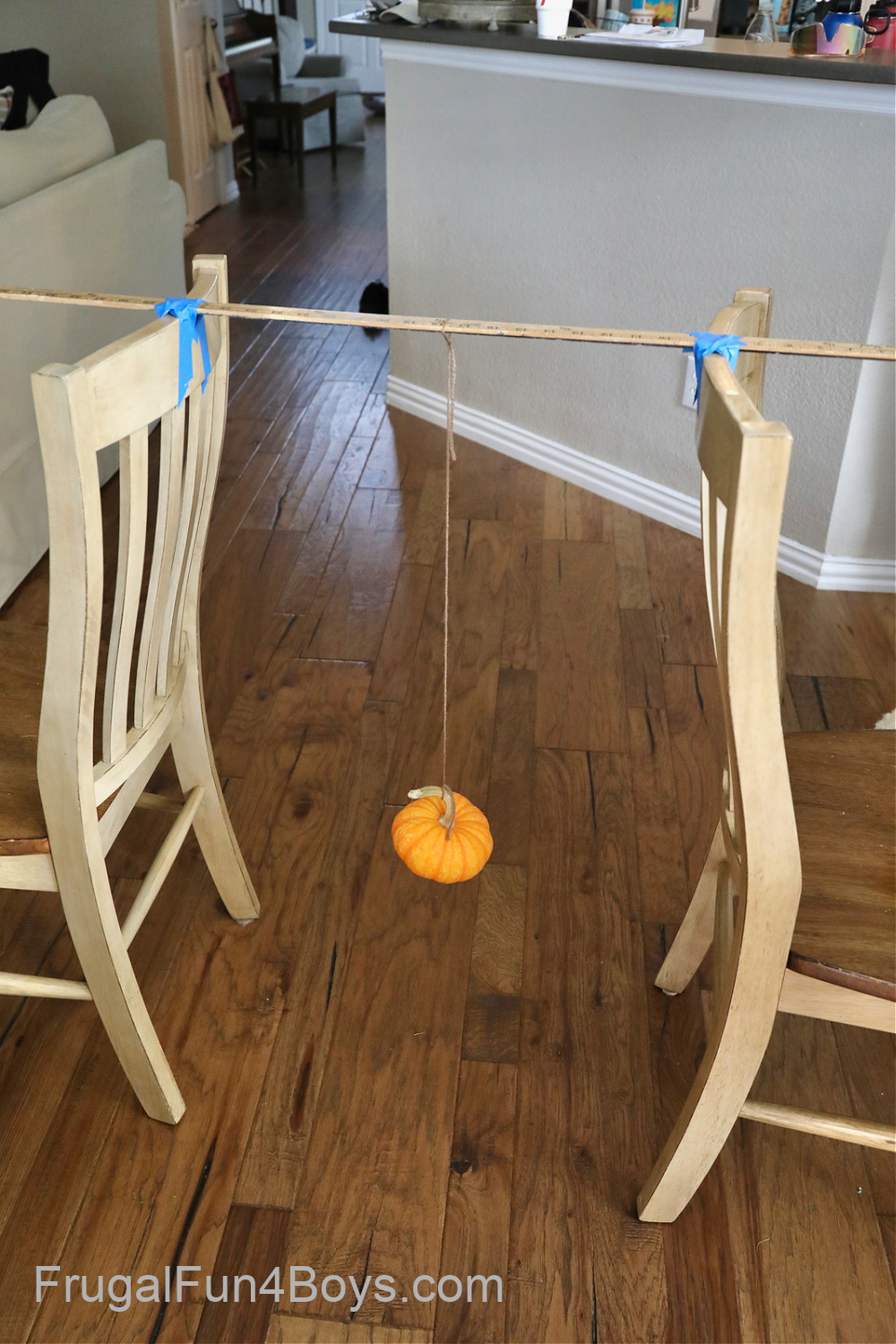
Step 3: Count how many complete back-and-forth swings your pumpkin pendulum makes in 30 seconds.
You’ll want to compare two different masses of pumpkins, and then two different string lengths for each mass.
We counted swings for our larger pumpkin with string lengths of 25 cm and 50 cm. Then we counted swings for our smaller pumpkin with string lengths of 25 cm and 50 cm.
For consistency, we pulled the pumpkin back to the same height each time by lining it up with the edge of the chairs.
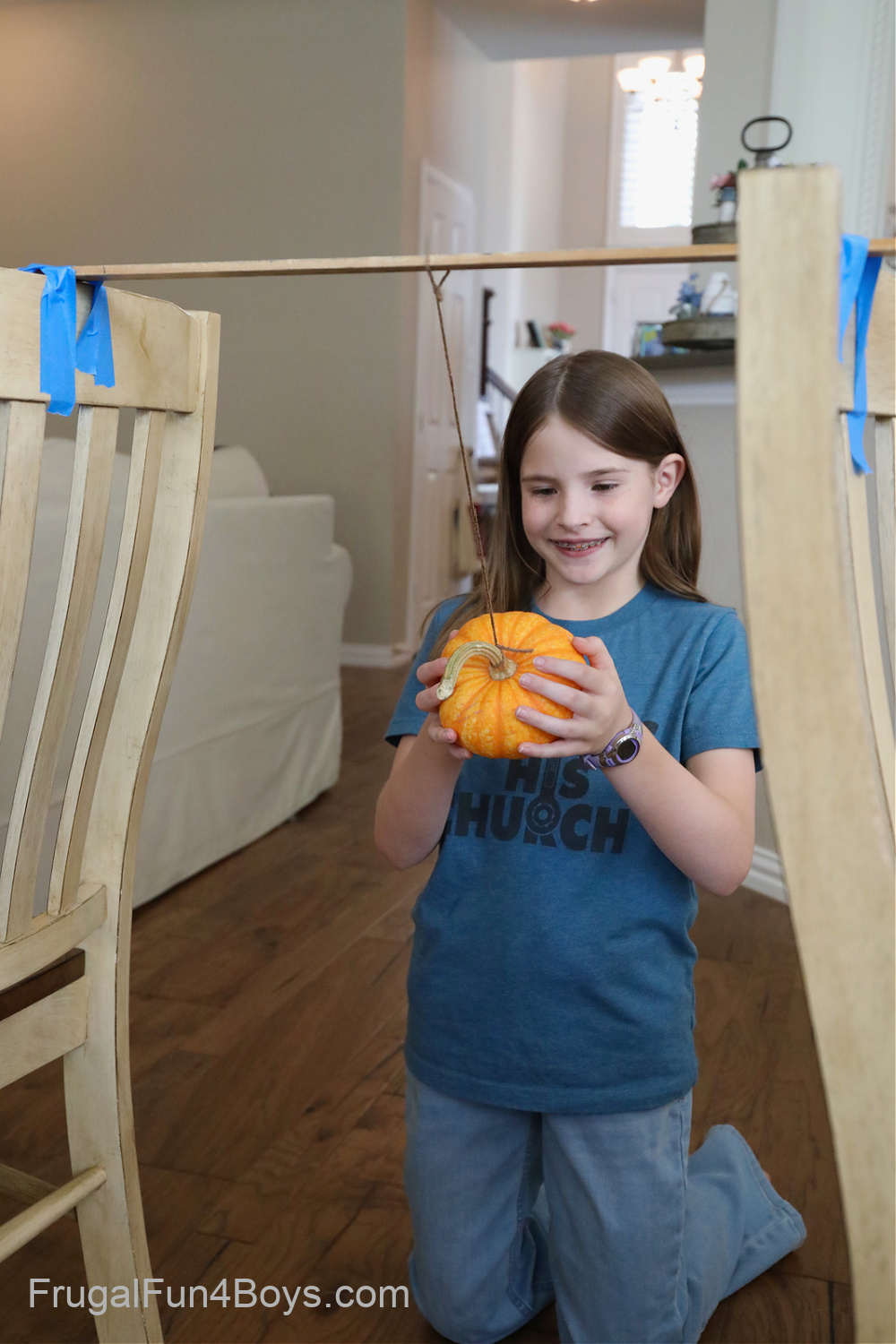
He are our results:
431 gram pumpkin:
50 cm string – 19 swings
25 cm string – 26 swings
290 gram pumpkin:
50 cm string – 19 swings
25 cm string – 27 swings
The period of a pendulum depends on the length, and is NOT affected by the mass. It is also not affected by the angle at which you release the pendulum. We kept our angle the same just because it’s good scientific practice to only test on variable, but it wouldn’t have mattered if we didn’t.
(In high school and college physics, students will learn that the period also depends on acceleration due to gravity.)
Here are more awesome Fall STEM Activities!
If you’re looking for fall science and engineering activities, we’ve got some great options. Do science with fall leaves, explore candy corn catapults, make creepy magnetic slime, and more.
See them here: Fall STEM Activities
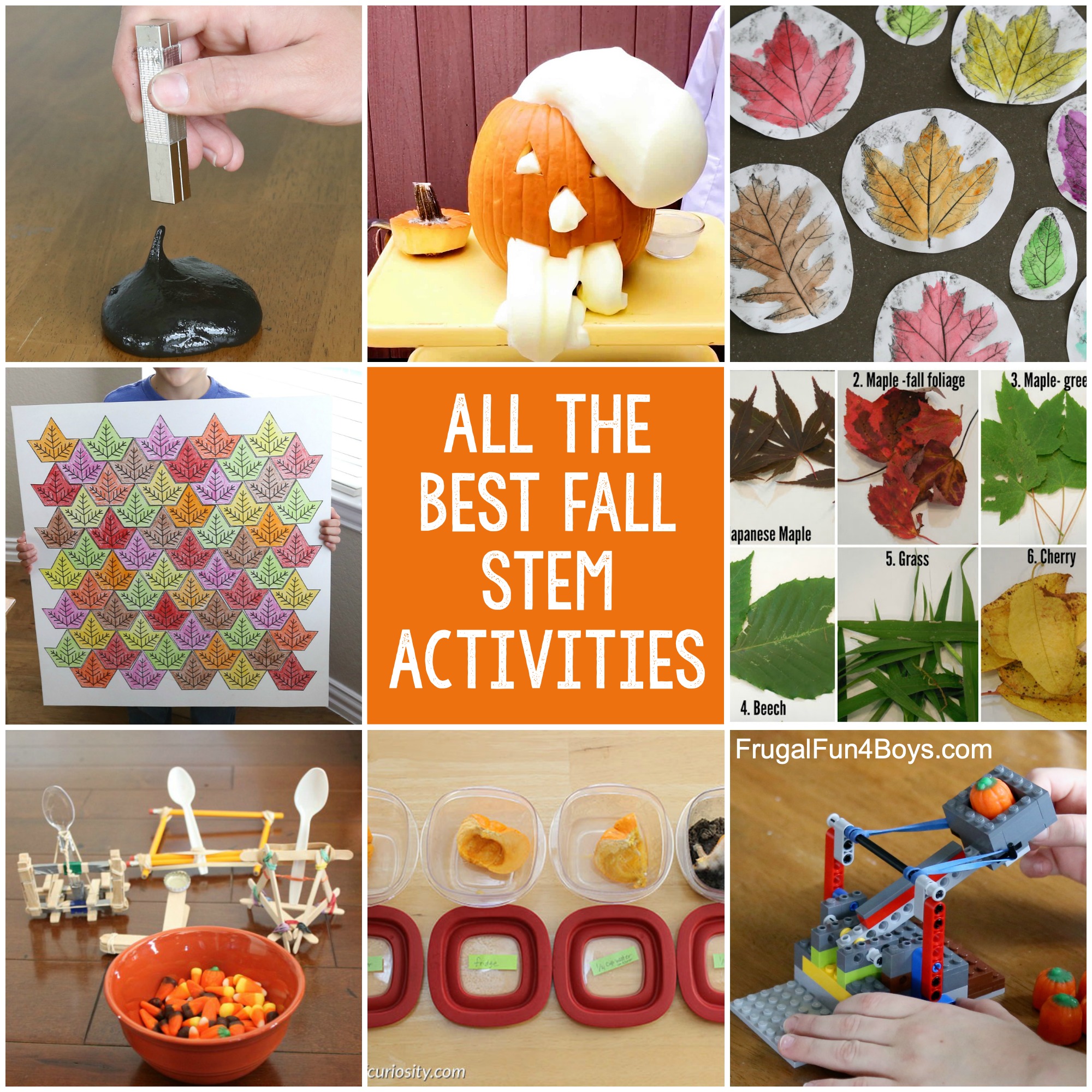
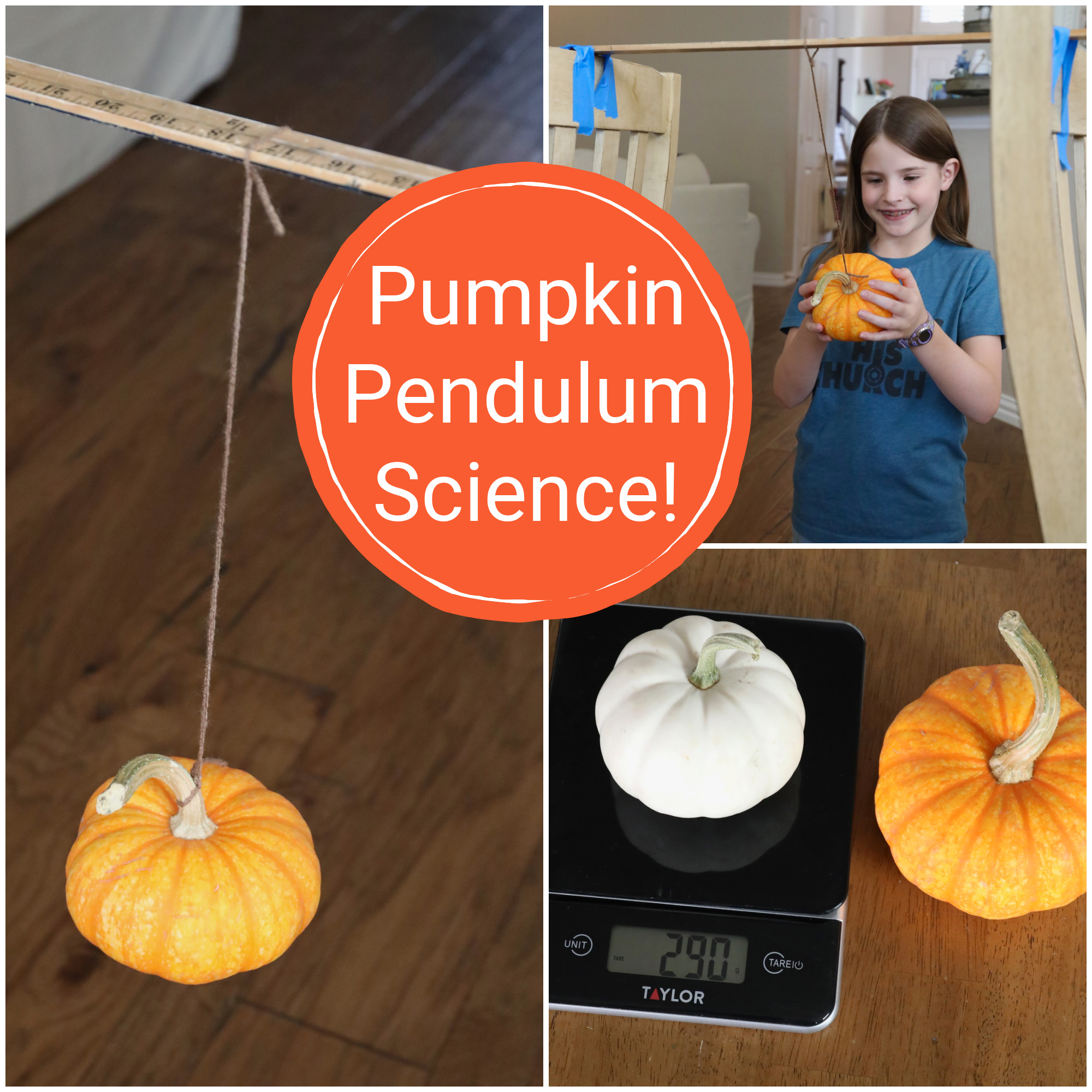

1 Comments
Lindsey Oct 26, 2023
Fantastic! You are my ‘go to’ when I am stuck for ideas for my after school STEM club Sarah! Thank you.
Post a Comment